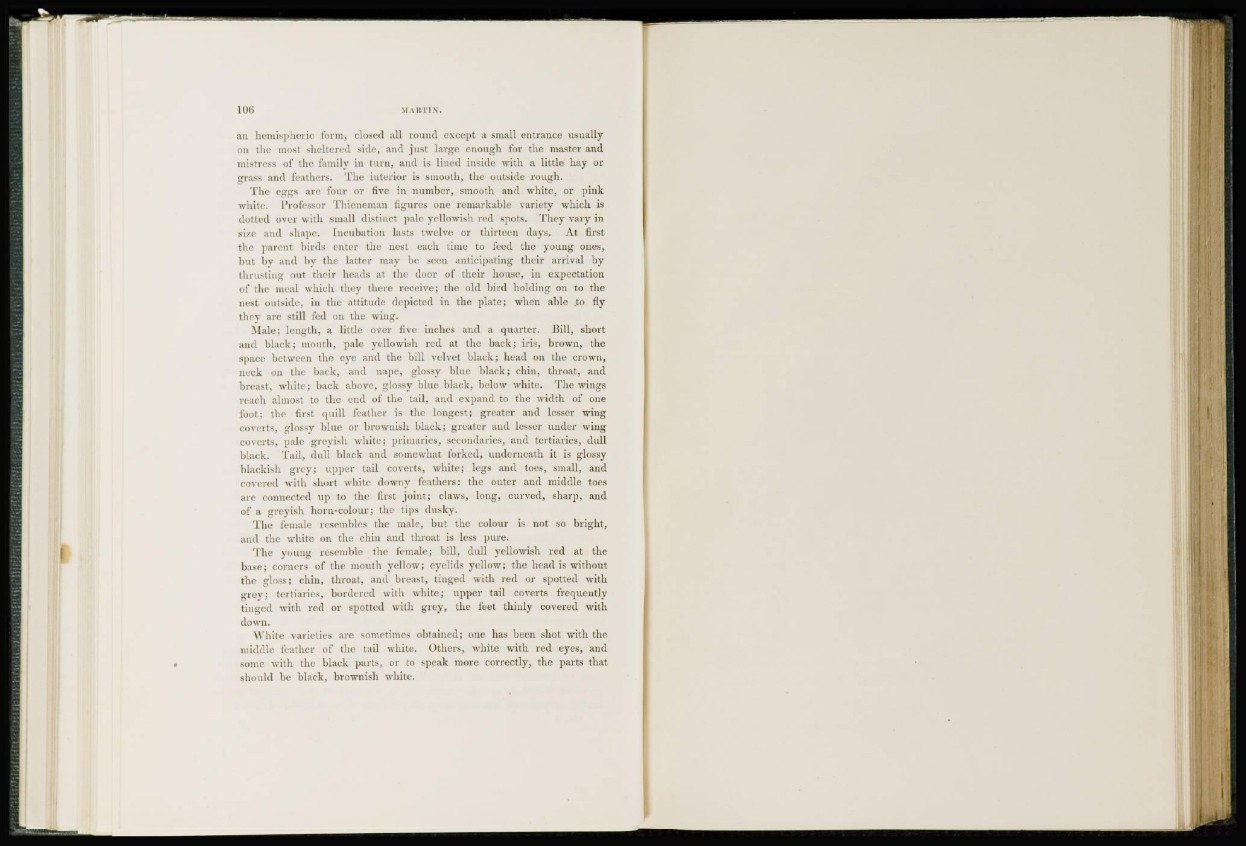
an hemispheric form, closed all round except a small entrance usually
on the most sheltered side, and just large enough for the master and
mistress of the family in turn, and is lined inside with a little hay or
grass and feathers. The interior is smooth, the outside rough.
The eggs arc four or five in number, smooth and white, or pink
white, Professor Thieneman figures one remarkable variety which is
dotted over with small distinct pale yellowish red spots. They vary in
size and shape. Incubation lasts twelve or thirteen days. At first
the parent birds enter the nest each time to feed the young ones,
but by and by the latter may be seen anticipating their arrival by
thrusting out their heads at the door of their house, in expectation
of the meal which they there receive; the old bird holding on to the
nest outside, in the attitude depicted in the plate; when able .to fly
they are still fed on the wing.
Male; length, a little over five inches and a quarter. Bill, short
and black; mouth, pale yellowish red at the back; iris, brown, the
space between the eye and the bill velvet black; head on the crown,
neck on the back, and nape, glossy blue black; chin, throat, and
breast, while; back above, glossy blue black, below white. The wings
reach almost to the end of the tail, and expand to the width of one
foot; the first quill feather is the longest; greater and lesser wing
coverts, glossy blue or brownish black; greater and lesser under wing
coverts, pale greyish white; primaries, secondaries, and terliaries, dull
black. Tail, dull black and somewhat forked, underneath it is glossy
blackish grey.; upper tail coverts, white; legs and toes, small, and
covered with short white downy feathers: the outer and middle toes
are connected up to the first joint; claws, long, curved, sharp, and
of a greyish horn-colour; the tips dusky.
The female resembles the male, hut the colour is not so bright,
and the white on the chin and throat is less pure.
The young resemble the female; bill, dull yellowish red at the
base; comers of the mouth yellow; eyelids yellow; the head is without
the gloss; chin, throat, and breast, tinged with red or spotted with
grey; tertiaries, bordered with white; upper tail coverts frequently
tinged with red or spotted with grey, the feet thinly covered with
down.
White varieties are sometimes obtained; one has been shot with the
middle feather of the tail white. Others, white with red eyes, and
some with the black parts, or to speak more correctly, the parts that
should be black, brownish white.